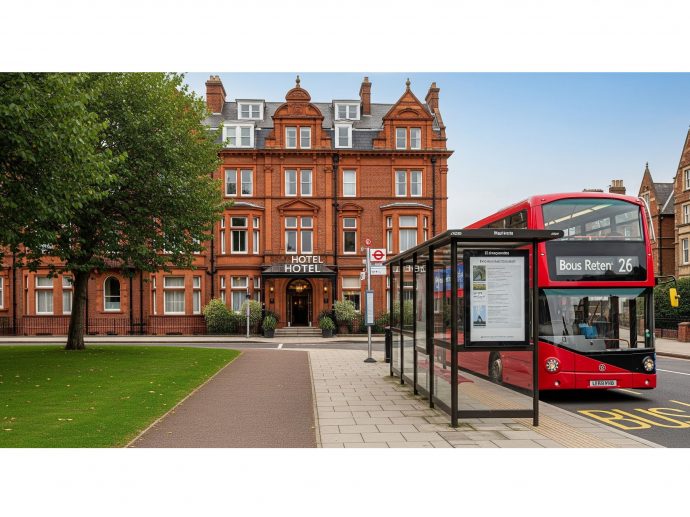Categories more
- Adventures (17)
- Arts / Collectables (15)
- Automotive (37)
- Aviation (11)
- Bath, Body, & Health (77)
- Children (6)
- Cigars / Spirits (32)
- Cuisine (16)
- Design/Architecture (22)
- Electronics (13)
- Entertainment (4)
- Event Planning (5)
- Fashion (46)
- Finance (9)
- Gifts / Misc (6)
- Home Decor (45)
- Jewelry (41)
- Pets (3)
- Philanthropy (1)
- Real Estate (16)
- Services (23)
- Sports / Golf (14)
- Vacation / Travel (60)
- Watches / Pens (15)
- Wines / Vines (24)
- Yachting / Boating (17)
UK City Hotels with Unusual and Unique Designs
Published
08/25/2025Hotels in the city have started transforming the meaning of being in the centre of the city. It is not just about being comfortable and convenient, as many properties are also built using bold architecture and innovative interiors to evoke a feeling of magic. These rooms are no longer just rooms to sleep in but highly immersive and artistic spaces which demonstrate cultural and artistic ambition.
The Practical Appeal of Hotels near Public Transport
People on the move are inclined to seek convenience and not lose their personality. Most of the buildings are designed as hotels near public transport, such as trains, trams, and underground lines, and surround their visitors with an impressive interior. This pairing enables the visitors to relish some striking aesthetics without compromising functionality, which makes the journey easier and more pleasant.
Hotels Inspired by Heritage
Some properties blend modern comfort with preserved history.
- Repurposed Industrial Spaces: Old warehouses, printing presses, and factories have been reimagined as hotels that retain their raw textures. Exposed brickwork, steel beams, and high ceilings remind guests of the building’s past while offering a stylish backdrop for contemporary furnishings.
- Architectural Icons Reimagined: Elsewhere, former municipal buildings and courthouses have been converted into chic retreats. Original features such as stone staircases or stained-glass windows remain central, celebrating the heritage while offering a modern stay.
Artistic Interiors with Bold Statements
Artistic flair is a feature of the hotels which regard interiors as a museum of art. The walls can be used to display rotating exhibits, and sculptures and other art can be used to turn communal spaces into cultural ones. Even some properties plan rooms on the basis of an artistic theme, and thus every stay can be a new experience. These areas mingle the distinction between accommodation and creative installation.
Futuristic Concepts in City Settings
Innovation plays a leading role in the design of certain urban hotels. Minimalist pods with smart controls, automated check-in desks, and interactive lighting schemes appeal to guests seeking technology-driven environments. The result is a seamless combination of digital convenience and architectural novelty.
Playful Themes that Surprise Guests
Whimsy has a place in hospitality, too. Themed hotels offer imaginative interiors where every detail ties back to a central idea. From literature-inspired suites to décor echoing local folklore, these properties deliver experiences that feel theatrical yet comfortable. Guests often leave with stories as memorable as the destination itself.
The Importance of Communal Design
Lobbies, lounges, and rooftop bars provide more than functional space. In unique hotels, these areas are crafted to encourage interaction and exploration. Double-height atriums, indoor gardens, or staircases resembling works of art ensure that shared spaces become part of the journey rather than simple transition points.
Sustainability Meets Creativity
Unusual design increasingly overlaps with eco-conscious thinking. Recycled materials, living walls, and energy-efficient layouts prove that creativity does not need to come at the planet’s expense. These hotels present sustainability as part of the overall design narrative, adding substance to their distinctive style.
Choosing the Right Stay
Strange hotels will attract guests through research. Photos, layouts, and customer feedback can determine how innovatively creative a property is, balanced with comfort. A hotel, which is unexpected and brings a visual surprise, and also offers convenient facilities, makes the design look not only attractive but also useful.
Redefining the City Stay
Hotels in the cities across the UK are making architecture and interiors as their statement. Using heritage conversions and artistic installations to futuristic pods and eco-conscious spaces, each of the properties shows how design can change hospitality. By opting to stay in accommodation that can be described as a marriage of imagination and convenience, travellers find not only a room, but an experience that redefines how people perceive their urban stays.















